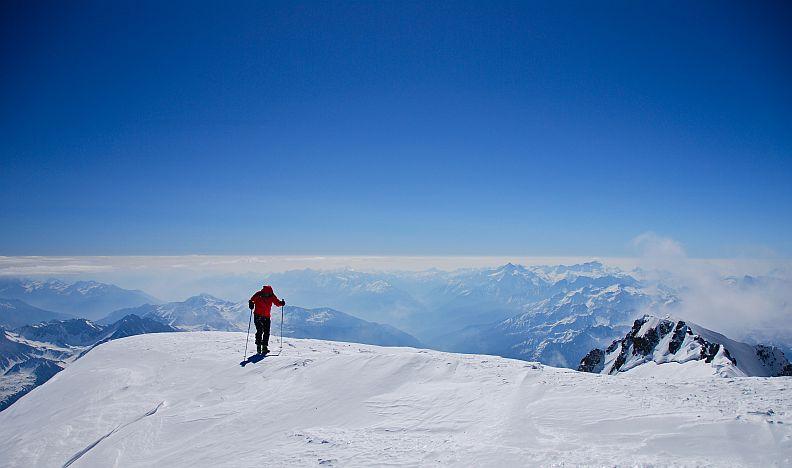Acclimatization

Acclimatization is critical for anyone traveling to the mountains, especially above 8,000 feet (2,438 m.). Mountaineers like to use the old adage, "Climb high; sleep low." What this means is that you should do day hikes that gain significant altitude, say around 2,000-3,000 feet (610-914 meters), and then return to sleep and recuperate at lower altitudes.
Above 10,000 feet (3,048 m.) you should limit your sleeping altitude to only 1,000 feet (305 m.) higher per day. However you still need to do the day hikes that gain several thousand feet above your sleeping altitude.
Gradually you can work your way up the mountain to higher and higher altitudes. Doing this, you acclimate much faster than just staying in one spot for several days.
OK, I'll give you an example of an acclimatization plan I use when climbing to 14,000 feet (4,267 m.). I spend two days at around 8,500 feet (2,591 m.), doing some relatively easy day hikes up to 9,500 feet (2,895 m.). Then about day three, I do a strenuous hike from about 9,500 feet up to around 12,500 (3,810 m.), and return to sleep at 9,500 or 8,500 feet.
The next day is spent mostly "chilling out" around camp. On day five, I climb to a high camp around 12,500 and summit the next morning. Now this is only an example, and you may not need as much time at the lower altitudes or you may need more. Everybody's a little different, so listen to what your body is telling you. Click here for symptoms of altitude sickness.
Hydration is also critical for acclimation, so make sure your urine is clear and copious. Drinking four quarts of water a day is usually good but keep an eye on your urine; if it gets too dark, you need to drink more.
So, physiologically, what happens during acclimatization? As you ascend higher into the atmosphere, there is less atmospheric pressure pushing all the air molecules together, so oxygen molecules become few and far between.
Your body has to cope with this, so what does it do? Well, first of all, since there is less oxygen per square inch, you have to move larger volumes of air to get sufficient amounts. So your body starts by increasing your breathing and heart rate and then after a while it actually produces a lot more red blood cells, so as to have a denser population of oxygen molecules in the blood.
This in turn makes your blood a lot thicker, which can cause other problems. See high altitude stroke.
Most people, despite all of this, begin to deteriorate above 17,000 feet (5,181 m.), and above 26,000 feet (7,924 m.), in the so-called "death zone," further acclimatization is not possible.
So limiting your time at extreme altitudes and returning to lower elevations to recuperate is very important. Remember, "CLIMB HIGH; SLEEP LOW."
Return to Home page from Acclimatization